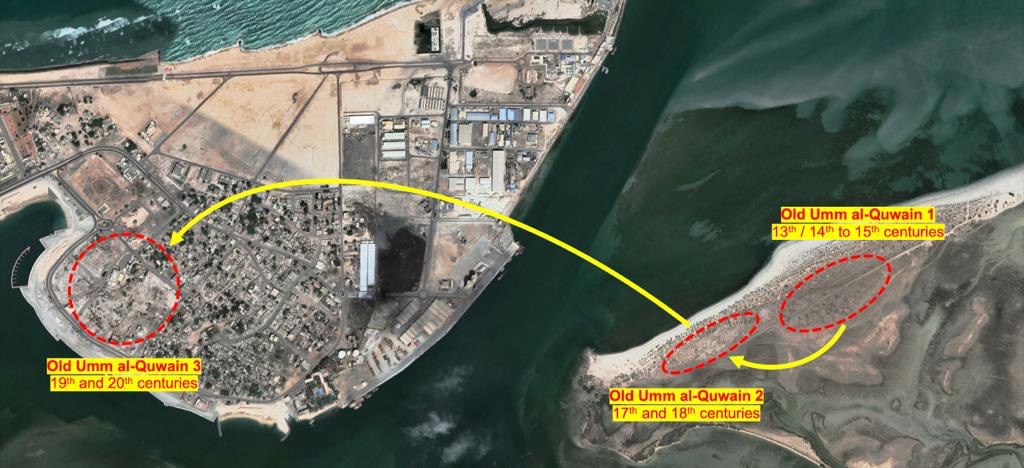


Research, directed by Shaikh Majid bin Saud Al Mualla, Head of the Tourism and Archaeology Department of Umm Al Quwain (TAD-UAQ), has identified two coastal settlements on Siniya, opposite today’s town, the oldest of which dated from the 13th or 14th Century. This is the bigger of the two settlements discovered lately on Siniya Island. It appears to have had a stone-built urban center surrounded by palm-frond-house suburbs.
A large oyster shell midden or stone building was found to the west of the settlement, pointing to the importance of the pre-modern pearling industry.
This first settlement is the larger of the two recently identified on Siniya Island. It seems to have had an urbanized core of stone buildings surrounded by suburbs of palm-frond houses. A large oyster shell midden was found to the west of the settlement, pointing to the importance of the pre-modern pearling industry.
The oyster shell middens next to the second settlement are much larger than those of the first. This may reflect the progressive erosion of the earlier middens. But it might alternatively reflect the tremendous growth of the pearling industry that began in the 18th century. This pearling boom was fundamentally important to the emergence of the Emirates.
This second town was destroyed on 18th January 1820 by a naval squadron dispatched to the Arabian Gulf by the British East India Company to deal with the issue of Qasimi “piracy”.
A rare coin of Shaikh Sultan bin Saqr Al Qasimi of Ras Al Khaimah was discovered on the site. He signed the maritime treaty of 1820 that ended hostilities and laid the foundation for the modern UAE.
This constitutes the third town, which prospered between the 19th and mid-20th century, before the focus of settlement once more shifted, this time to the extensive suburbs of the modern city.
The three historic towns of Umm Al Quwain can now be shown to belong to a single occupational sequence lasting from the 13th or 14th century to the present day.
Siniya Island is situated between the peninsula of Umm Al Quwain and the Gulf coast of the Emirates, protecting the Khor Al Beida lagoon. This mangrove-fringed lagoon is the best surviving example of its type in the Northern Emirates. Around its shores is evidence of occupation over a period of at least 6,000 years, including sites from the Neolithic and Bronze Age periods as well as the major site of ed-Dur, a port settlement that traded with the Roman Empire 2,000 years ago.
The work is supported by the Federal Ministry of Culture and Youth, a reflection both of the outstanding cultural significance of the archaeology of Siniya Island, and the commitment of the United Arab Emirates to protect and promote its heritage.
These will ultimately be opened to the public, who will be invited to explore the remarkable history of Umm Al Quwain that is now emerging.